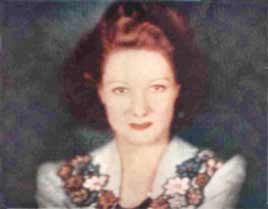|
Part 3 of 3 of a syndicated article by
Richard G Elen <previous>
Baird's initial colour signals were generated from a
120-line mirror-drum camera mounted on a trolley that made it possible to take
it outside the building.
It was demonstrated, first to the press in early
December 1937 and then to the public on 4 February 1938 at the Dominion Theatre
in London’s Tottenham Court Road, where 8-metre vision transmissions from
Crystal Palace were shown on a 12ft x 9ft screen, the sound being carried by
land-line.
Work continued at the Crystal Palace site until 1939,
with colour and large screen 8.3m, 2m and possibly 6.25m 405-line transmissions
from the South Tower; CRT and transmitter production in the Rotunda; and
400-line, 51MHz airborne TV development for the French government in the School
of Arts.
With the advent of war in September 1939, Gaumont
British called in a Receiver and put Baird Television Limited into liquidation.
Many members of staff lost their jobs, going on to
work on radar and at research establishments. And although a new company,
Cinema Television (later CinTel), was formed, Baird's contract was terminated
and his work continued largely unaided until his death in 1946.
Baird’s colour system, by the end of 1940, was
essentially a development of the venerable flying-spot technology that had been
part of the Baird system from the beginning.
A high-power projection cathode ray tube was set up to
display a blank raster. The rapidly scanning beam was passed through a rotating
disc filter, half red-orange and the other half blue-green, and then to a lens
which focused the scanning beam on the object being televised, the reflected
light from the object being picked up by photocells.
At the receiving end, the image was displayed on a
projection CRT behind a similar synchronised spinning colour wheel, and through
a lens to a screen for viewing.
|

Above: This image of
aviator Paddy Naismith, shot from the 600-line Baird colour display in 1940,
was printed in Electronics and Television & Short-Wave World [5,6].
However, the printed version lacks the level of detail shown
above.
|
This sequential-frame colour system was not unlike the
colour TV system developed by CBS in the United States after the war, but in
Baird’s case, the image was made up of 600 scanning lines and was of
impressive quality (see above).
Yet even this was superseded by the ingenious
all-electronic "Telechrome" system, for which a receiver was first demonstrated
to the press on 16 August 1944. And in 1941, Baird had refined the mechanical
system to transmit colour stereoscopic TV images using revolving shutters and
Red/Green/Blue sectored discs.
Richard G Elen [website]
[profile]
References: This article would not have been possible
without reference to the following published sources:
1. John Logie Baird – A Life, Antony Kamm and
Malcolm Baird, National Museums of Scotland Publishing
2. Early Television at the Crystal Palace, Ray
Herbert, New Crystal Palace Matters, (Journal of the Crystal Palace
Foundation), Winter 1994.
3. John Logie Baird – A Pictorial Record of Early
Television Developments, 1924-1938, Kelly Publications
4. Illustrated London News
5. Electronic Engineering (formerly Electronics and
Television & Short-Wave World)
6. Television History - the first 75 years
Thanks also to Melvyn Harrison, Chairman of the Crystal
Palace Foundation, and the Crystal Palace Museum staff for their assistance
during my visit. In particular, my special thanks to Ray Herbert for the use of
his photographs, press cuttings and his own articles, and helpful comments
without which this article would have been impossible to write.
|